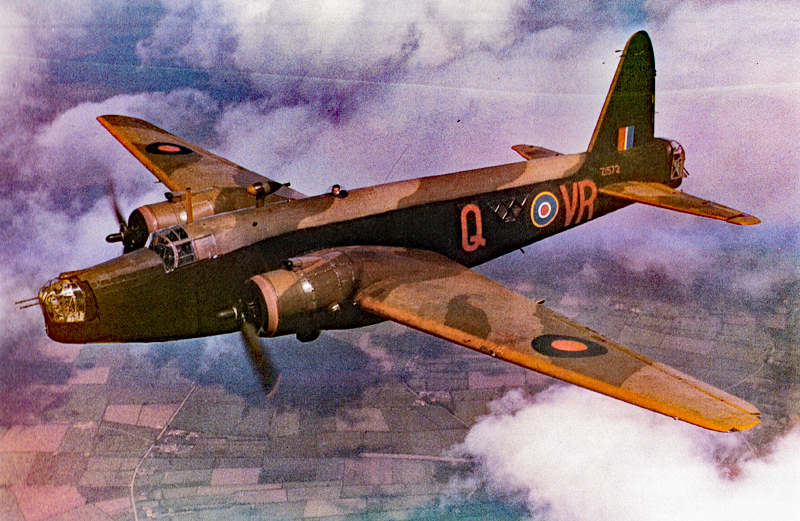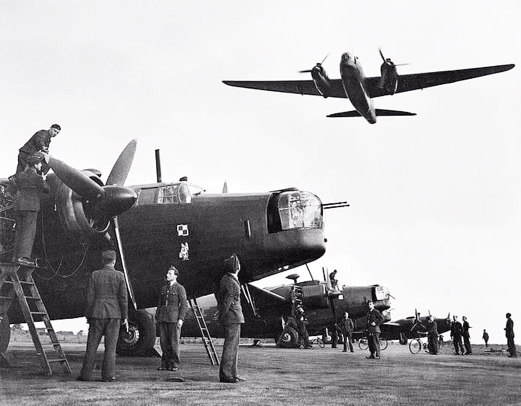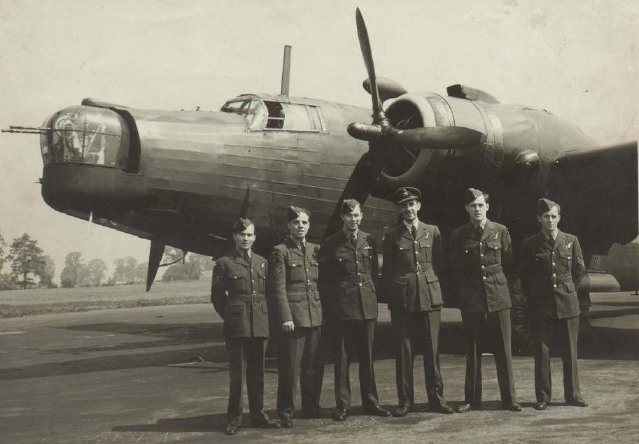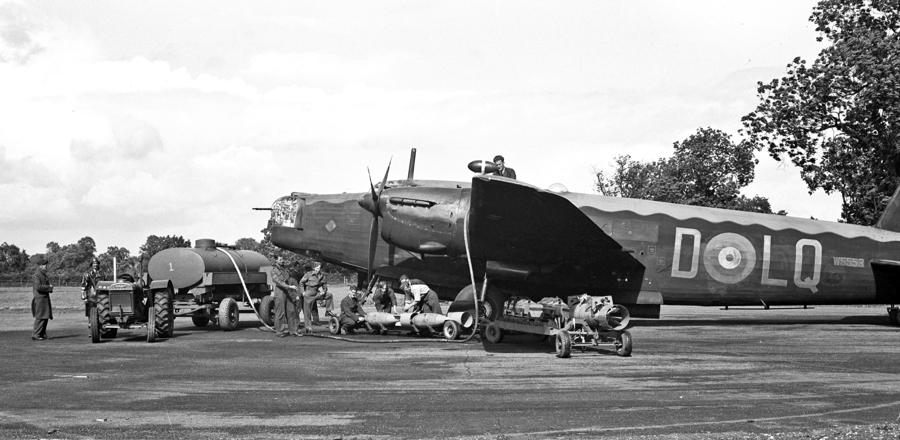 Bomber Command
Bomber Command  |
Aircrew Chronicles
|
Aircrew Losses
|
Nose Art
|
BCATP
|
Lancaster
|
Media
|
Aircrew Chronicles
|
Aircrew Losses
|
Nose Art
|
BCATP
|
Lancaster
|
Media
 Bomber Command
Bomber Command  |
Aircrew Chronicles
|
Aircrew Losses
|
Nose Art
|
BCATP
|
Lancaster
|
Media
|
Aircrew Chronicles
|
Aircrew Losses
|
Nose Art
|
BCATP
|
Lancaster
|
Media

The twin-engined Wellington featured geodetic construction, a "basket weave" system devised by Barnes Wallis that gave the aircraft's structural framework tremendous strength because any one of the stringers could support some of the weight from even the opposite side of the aircraft. Blowing out one side's beams would still leave the aircraft as a whole intact. This framework was covered by fabric.
First entering service in October 1938, a total of 11,461 Wellingtons were built, considerably more than any other British-built bomber. During peak wartime production in 1942, 302 Wellingtons were built each month. The last Wellington was completed in October 1945. The Wellington was known as the "Wimpy" by the airmen, after J. Wellington Wimpy from the Popeye cartoons.
Together with the twin-engined Whitley and Hampden, the Wellington successfully carried the war to the enemy until large numbers of the four-engined heavy bombers became available beginning in 1942. The first Bomber Command raid of the war was made by Wellingtons the day after war was declared. Bomber Command Wellingtons went on to fly 47,409 operations and drop 41,823 tons of bombs. 1,332 Wellingtons were lost in action.

|
During May 1943, three Canadian Wellington Squadrons (420, 424, and 425) were sent to Tunisia as No. 331 Wing RCAF to support the Allied invasions of Sicily and Italy. They operated almost every night for three months bombing airfields, harbours, and rail facilities. They also provided battlefield support during the assaults. The conditions were challenging for the airmen and ground crew who lived and worked in tents. Temperatures ranged from below freezing to over 50 C. When it was dry, strong desert winds would blow down tents and cause zero visibility sandstorms. Sand and dust would fill every crack and orifice and make breathing and eating difficult. Often rains turned the rudimentary landing strips and surrounding tent cities into a sea of sticky mud. Through all of this the bombers had to be maintained in the open. The squadrons left their Wellingtons behind with the RAF's North Africa Group when they returned to England in late October. They were reassigned to Bomber Command and converted to Halifaxes. |
As Wellingtons were taken off of operational service, many of them were assigned to Operational Training Units (OTU's). Here rookie crews who were in the final stages of their training and had numerous challenges already had to contend with aircraft that were "clapped-out" as they said.
The losses at OTU's were high with 1459 Wellingtons being destroyed, most in training accidents. Ten percent of the names on Canada's Bomber Command Memorial are those of airmen killed at OTU's, almost all on Wellingtons.
Twelve of the fifteen RCAF Squadrons that served with Bomber Command operated Wellingtons during the early years of the war. As the war progressed, the Canadian Squadrons were converted to fly Halifaxes and Lancasters. 2586 RCAF aircrew were killed flying in Bomber Command Wellingtons. This represents 23.1% of the RCAF's losses in Bomber Command.

